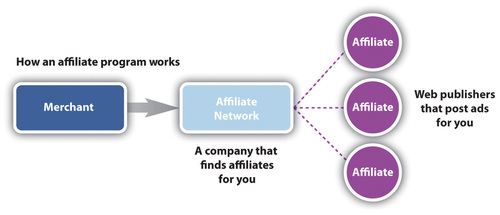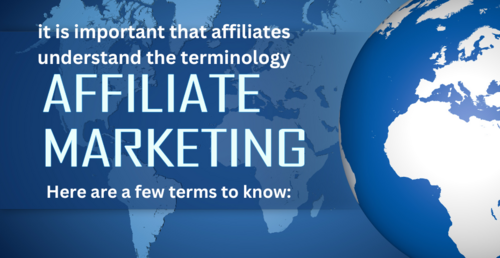
What You Need To Know Before Jumping In as an Affiliate Marketer And how to become one...

On the surface, affiliate marketing (also known as performance marketing) seems simple. Brands offer affiliate partners a percentage of every sale or lead the partners generate via their online promotional activity. Anyone can join these affiliate programs and easily monetize their online content and influence and get paid for promoting any brand they want.
If only it were that easy. In fact, affiliate marketing programs often include a complex series of hurdles that can be difficult and frustrating for beginners to navigate, including:
• Commission rates: New affiliates are at the mercy of brands that dictate payout structures and commission rates. Brands also typically offer the lowest base rates to new partners.
• Rejections: Smaller affiliates are often rejected by bigger brands because they are not as well known and therefore not perceived as being as valuable as larger organizations.
• Other pain points: There is also the need to continuously track ever-changing deals, expired links, minimum payouts and a host of other issues that can be enormously time-consuming.
Once these hurdles are cleared, however, there is the potential for big payouts. According to Statista, affiliate marketing spending in the U.S. alone is expected to reach $10 billion by 2023, more than triple what it was 10 years ago. Aspiring affiliates just need to know how to clear these hurdles and what resources are available to help. That begins with understanding what affiliate marketing really is before jumping into the fray.

What are affiliate marketing networks?
Many people assume affiliate marketing consists of two entities: the brand (often called the advertiser) and the affiliate (often called the publisher). The brand is the company selling its goods or services — think Home Depot, Target or Walmart. The affiliate is the publisher promoting the brand online. This could be a blogger, website owner, email newsletter publisher, YouTuber, podcaster or any other online promoter.
There is a third entity that’s just as important: affiliate networks, which form the connective tissue between brands and their affiliate partners. Affiliate networks keep track of affiliate sales, record the agreed-upon commission rates and relationship terms, collect payments from the brands and distribute earnings to the affiliates. Every time an affiliate is credited with a lead or sale, that information is tracked and reported by the brand to the affiliate network, which in turn ensures the affiliate is paid appropriately.
Brands that create more than just a referral program for their own customers typically choose to partner with an affiliate network. With a network, brands do not have to create their own tracking technologies. They also gain access to a larger base of potential affiliates who already understand the technical details of working with a specific affiliate network’s tracking links and functionality.
While the benefits are clear, affiliate networks can also pose a possible point of rejection for beginners, as affiliates must first apply and get accepted. I saw this challenge firsthand: Even after being in the industry for over a decade, my company was initially rejected from a top affiliate network until it knew that the business was mine. But once an affiliate is accepted into the network, it is then able to apply to all of the affiliate programs within that network.
Influencer marketing or monetization platforms offer affiliates the opportunity to circumvent this process. Such platforms grant affiliates the ability to leverage the technology and simplicity affiliate networks provide as well as promote any brand they want — all without having to apply to individual networks or programs.

What other terms should publishers know?
Once in, it is important that affiliates understand the terminology. Here are a few terms to know:
• Conversion rate: The percentage of an affiliate’s traffic that converts into commissionable transactions is the conversion rate. The percentage of overall traffic a brand receives that convert into sales is their conversion rate. Affiliates should look for brands with higher conversion rates.
• Commission rates: Brands typically pay affiliates a percentage of each sale, a fixed cost per valid lead or a combination of both. Base rates are often negotiable.
• Earnings per click (EPC): Networks will often show a brand’s EPC number as a guideline to potential partners based on how much others are earning “per click.” This is an aggregated number across all affiliate partners. While it can be a good indicator that sales are happening, it may not always equate to earnings as some affiliate partners have much higher conversion rates than others.
• Average order value (AOV): It is important to understand the average size of an order for brands paying based on sale percentage. If the brand has a high conversion rate, high-AOV publishers can often earn more even if their commission rate is lower.
.png)
What can a new affiliate marketer do to make things easier?
Like any new marketing or monetization channel, it is important to start with some small tests to see what works and what doesn’t. Not all brands will be a fit for a particular affiliate’s channels, and some brands won’t convert the amount of traffic expected while others will overperform.
Additionally, if the process of applying to multiple networks and each individual brand’s affiliate program seems daunting, consider influencer monetization platforms. These platforms leverage their existing partnerships to grant affiliates instant access to promote any of the brands on their site and more easily tap into the growing affiliate marketing industry.
(1)(1).jpg)
Andries van Tonder
Serial Entrepreneur & Investor
Business is my passion and I have established myself in multiple industries with a focus on sustainable growth. You will generally find me online on Facebook, Twitter, WebTalk, Instagram & Markethive
